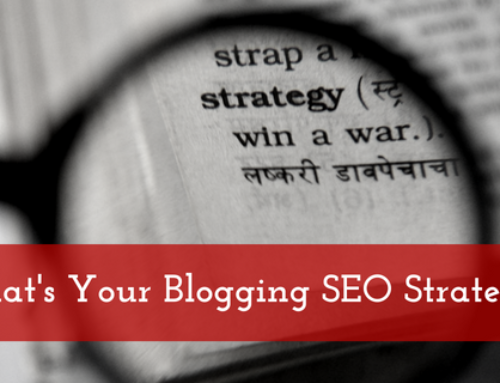Since the beginning of SEO, companies have worked hard to beat the Google algorithms that put their pages at the top of search engine results. It wasn’t an easy task back then, and it’s only gotten harder through various algorithm updates throughout the years.
I often say I “fell into” content marketing—and then fell in love. The love part came later, because my first assignments were to create hundreds (and sometimes thousands) of articles that companies would then pepper all over the internet in hopes of driving traffic to their websites. These article sites were hastily assembled with the sole purpose of stuffing keywords. There was nothing helpful or informative there, unless by accident, really. Most of the blogs were the same as articles found on hundreds of other sites, with wording only changed a little to avoid plagiarism penalties.
Only after Google started taking the actual buyer into account, and not just the company cramming articles down the internet’s throat, did I begin to fall in love with this thing called content marketing. Instead of hammering out the same thing over and over again, I was required to think like a buyer.
By this time, I’d moved from the content mill to a bona fide marketing agency, where I learned all about buyer personas. To me, a buyer persona was similar to the character worksheets I’d created for the books I’d written. I loved to imagine the buyer, figure out what made him or her tick, and determine what words I’d need to use to convince and convert them. What words would they use when they began a search for a new product? What needs did they have that my clients could fulfill?
Google’s Previous Drawbacks
Determining search phrases has always been tough. Sure, some are easy:
- Restaurants in Nashville
- Happy hours in Nashville
- Nashville upscale restaurants
The list really could go on and on. However, there are hundreds of restaurants in Nashville, all fighting over these keywords. The only way to win out over everyone else is to create an ad and throw a lot of money at bidding for those super popular keywords.
Even then, there were some glitches to the Google model. As this Inc. article states, the previous Google algorithm treated search phrases as a “bag of words,” discarding any they didn’t believe affected the search. In these cases, a buyer’s intent was also discarded along with the “unnecessary” words.
For instance, if someone searched “best restaurants in Nashville without kids,” Google would have returned results on what it considered the most important words: restaurant, Nashville, and kids. The user would then most likely receive a list of results for kid-friendly restaurants—the exact opposite of what they tried to search.
Google for the Buyer
The great news is, with BERT, the new algorithm, Google finally takes customer intent into consideration. When they search “best restaurants in Nashville without kids,” buyers are more likely to receive results that better match their actual query.
This is wonderful news for consumers, but could be tough to swallow for companies that have had an SEO strategy in place for years that worked the old system. The bad news is, if you want to get results for those super popular keywords, you’ll still have to pay dearly for them. The good news is, if you’re willing to make some changes to your content marketing strategy and begin to take customer intent into account, you could start climbing the SERPs with the use of long-tail keywords.
Long-tail keywords have shown some success in the past, especially for those companies that want to reach buyers who already have their wallets out and credit card at the ready. This particular style of search phrase has always taken customer intent into account. For instance, anyone searching, “used copy of Catcher in the Rye for sale,” is probably going to hit that buy button as soon as they find one. Someone searching, “Catcher in the Rye,” is probably just out for a quick stroll through bookstore sites or maybe even review sites before they decide to buy.
This is why your content is so very important now. For years, you’ve been taking Google intent into account when creating content for search engines. It’s time to start thinking of your buyers. How will your content strategy change? If you’re not sure, give us a call.




